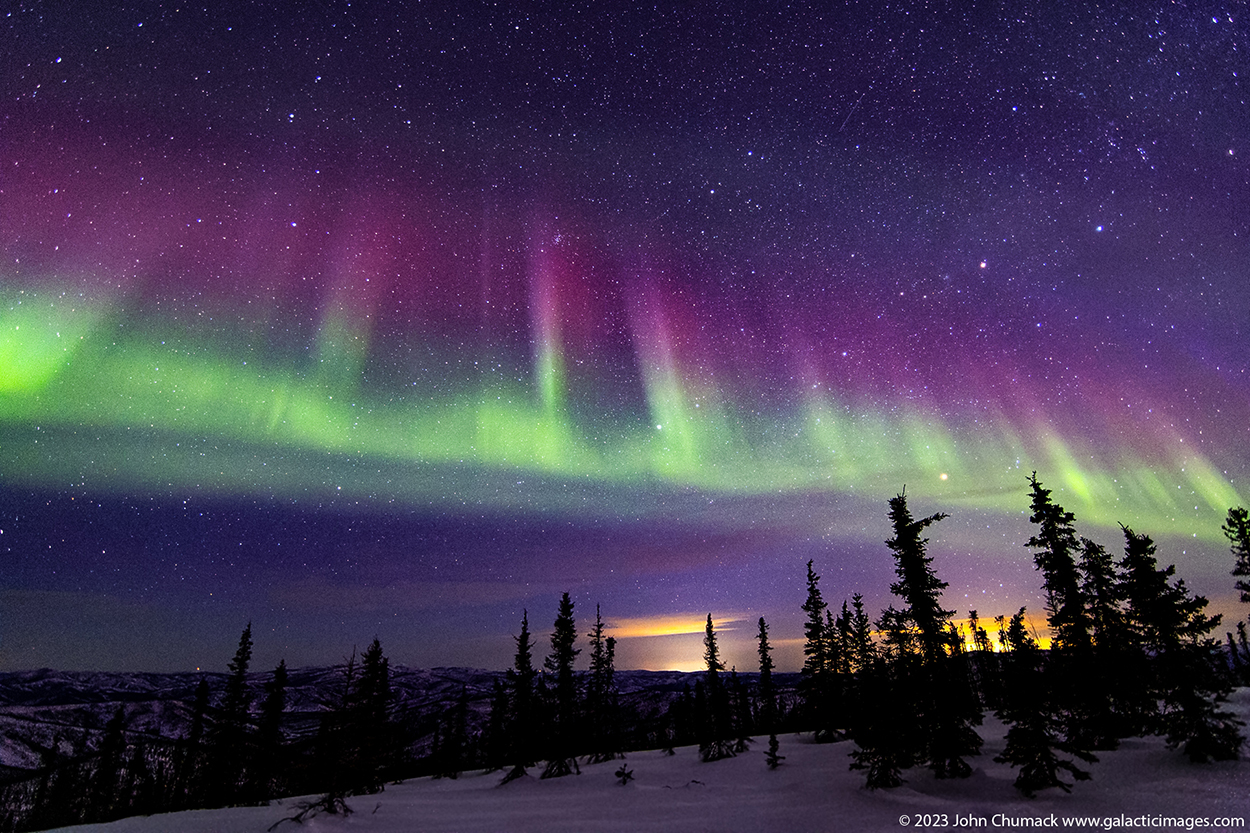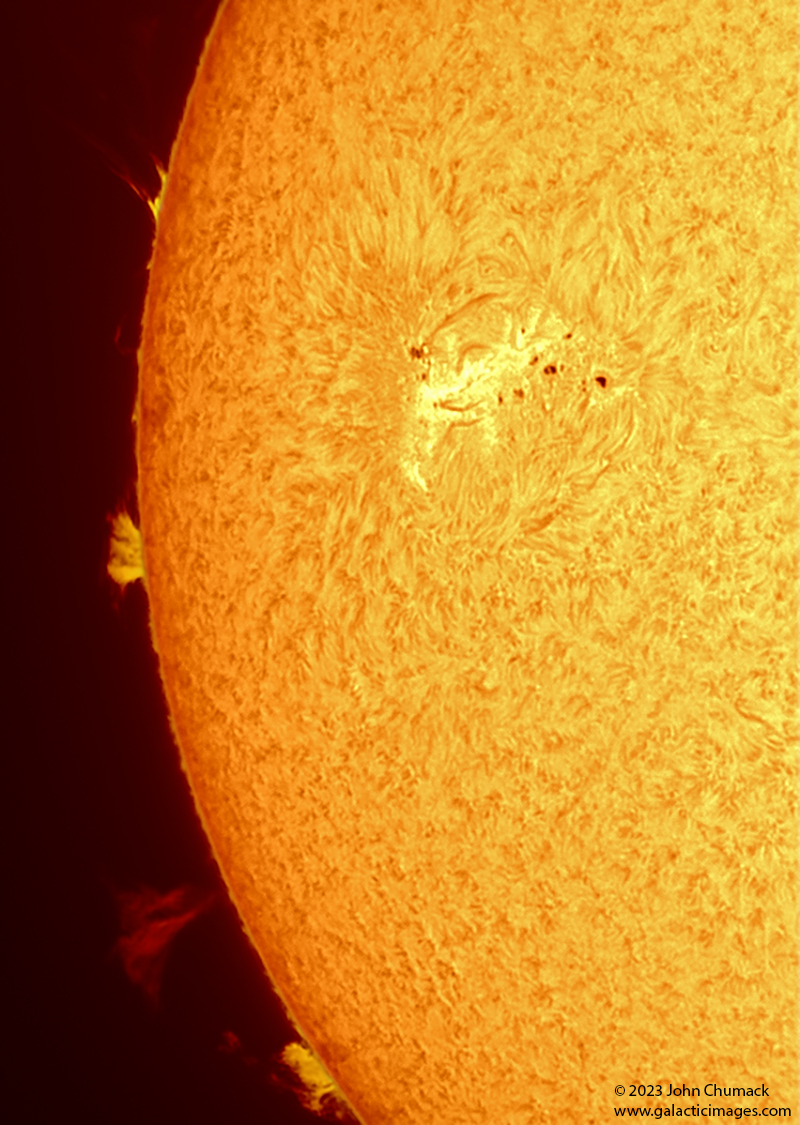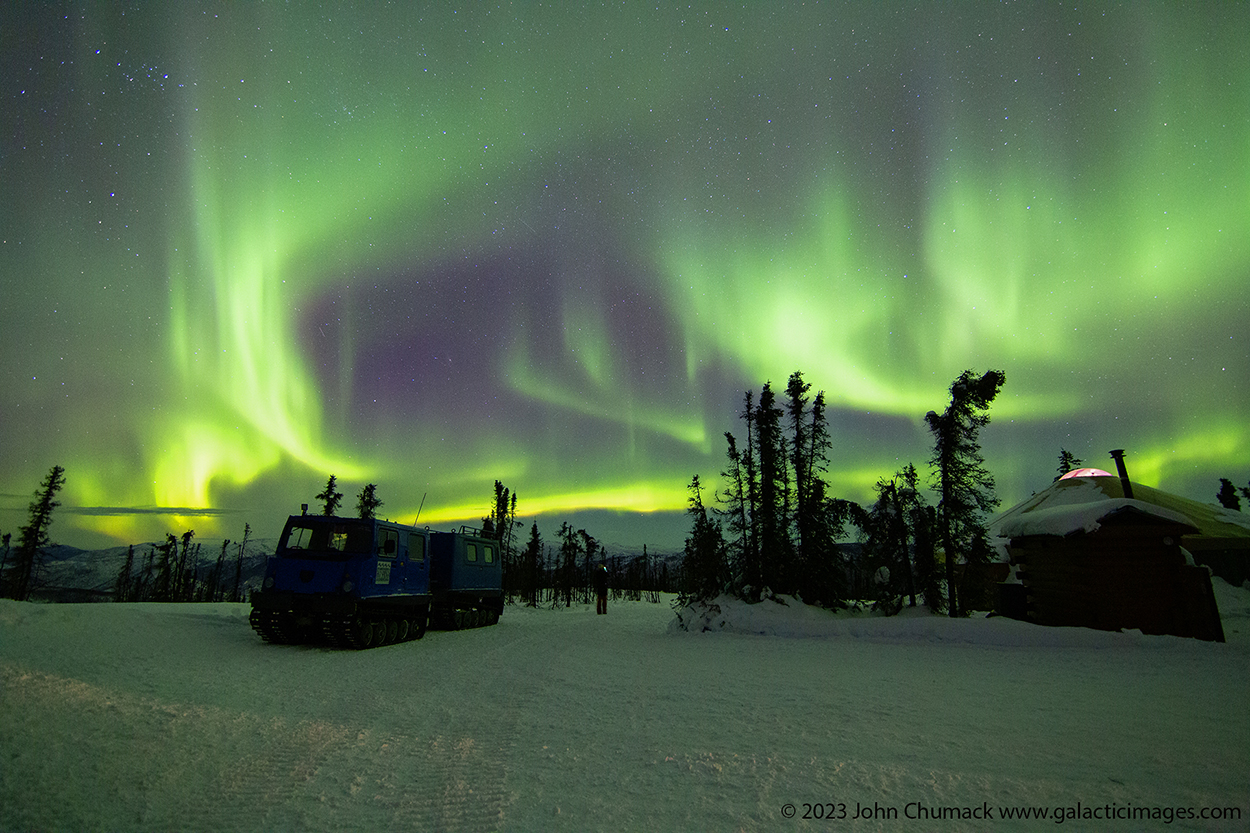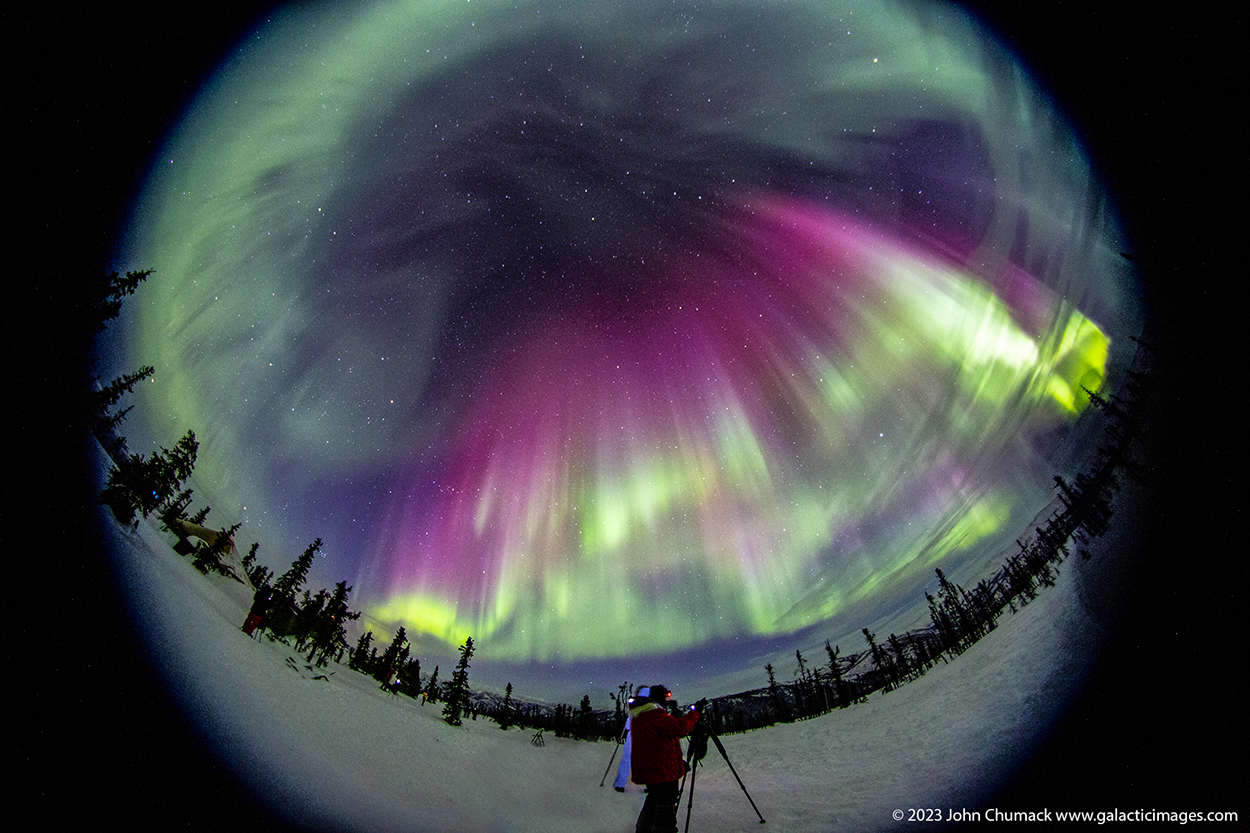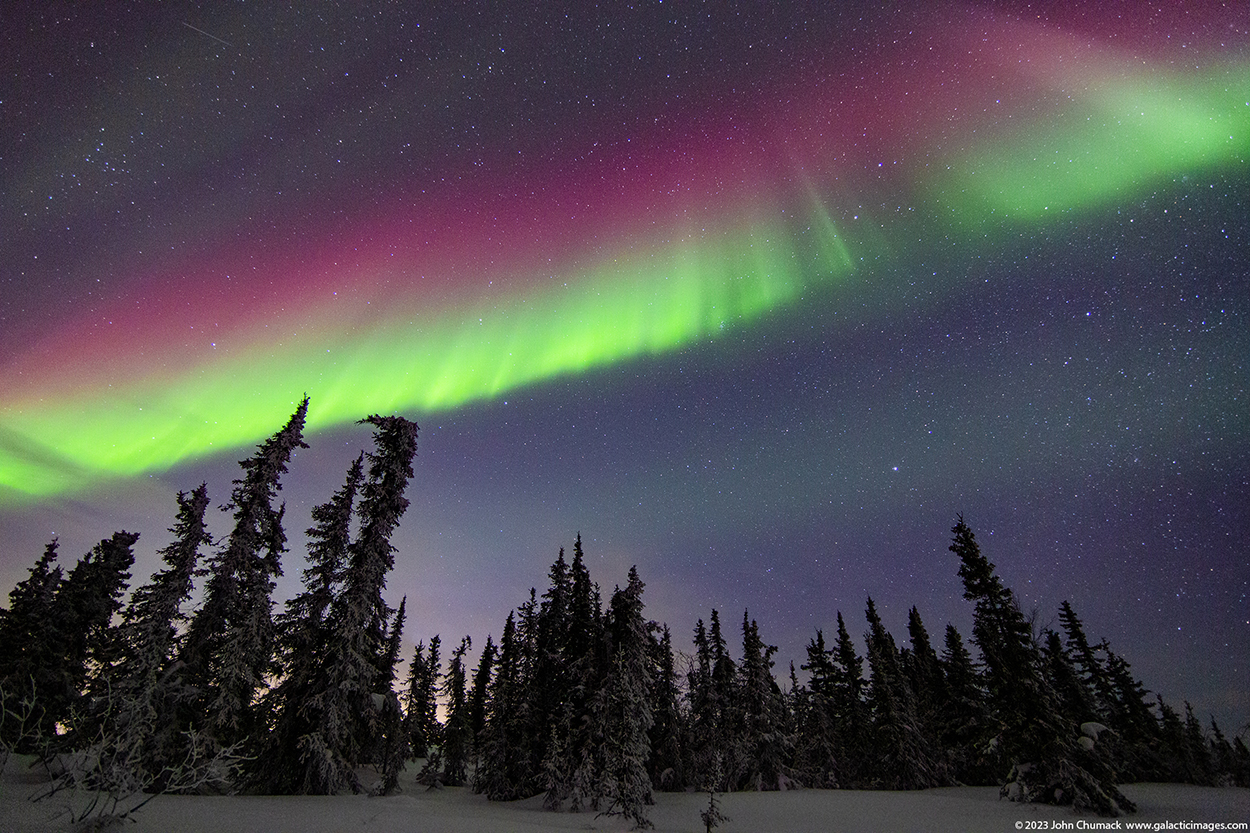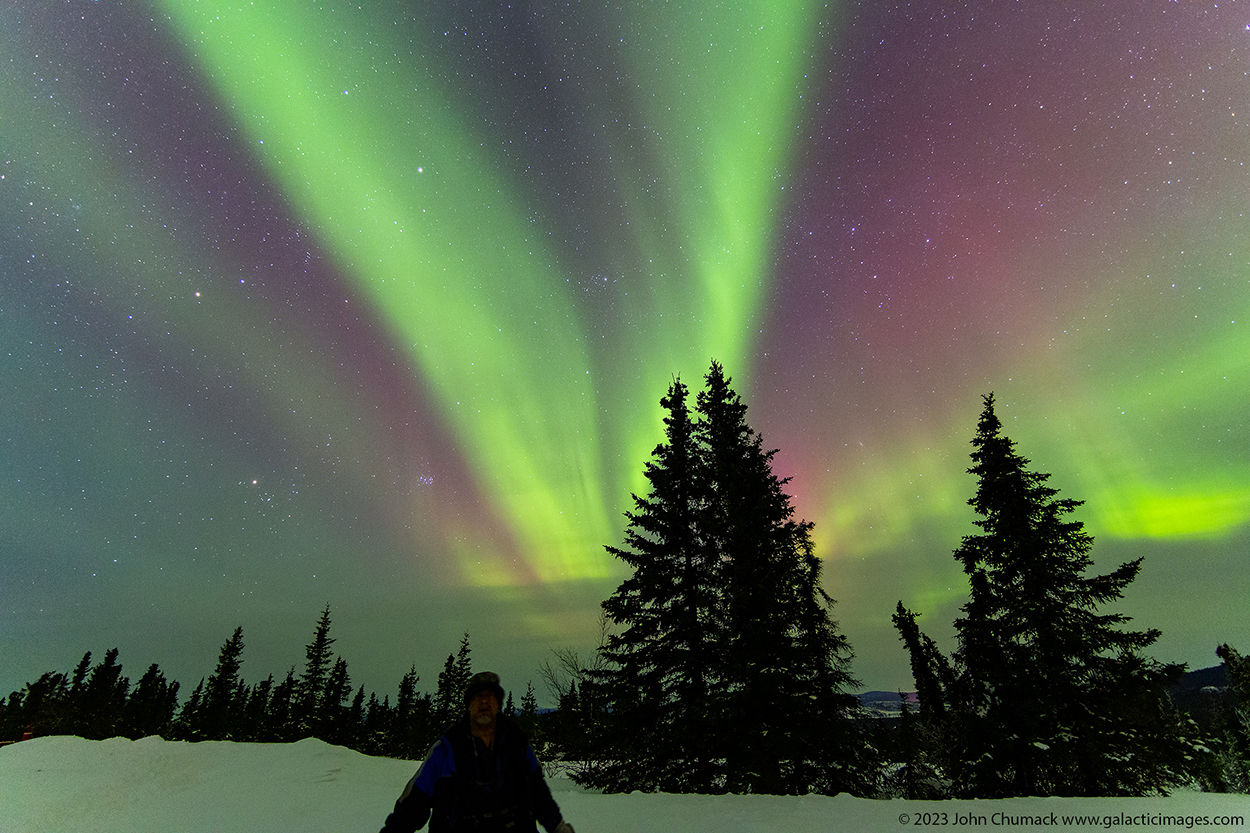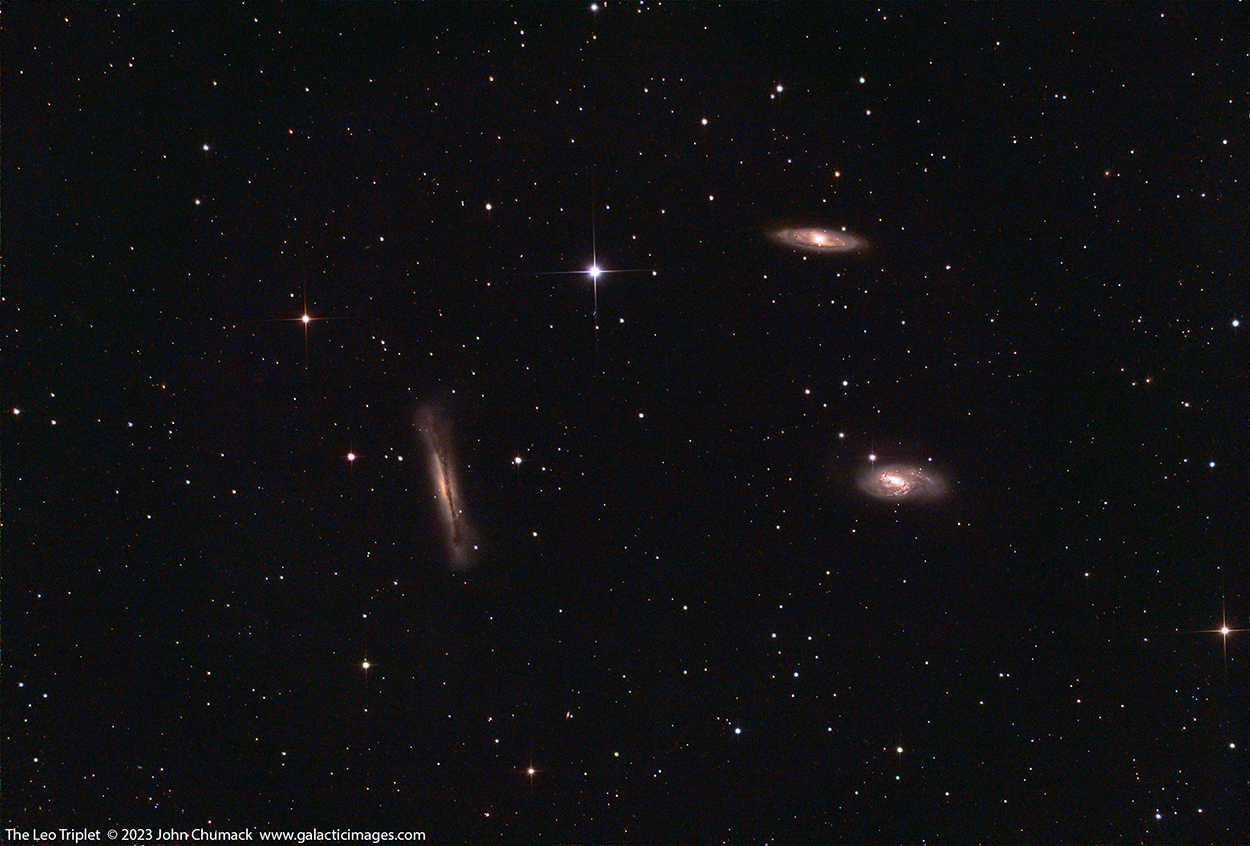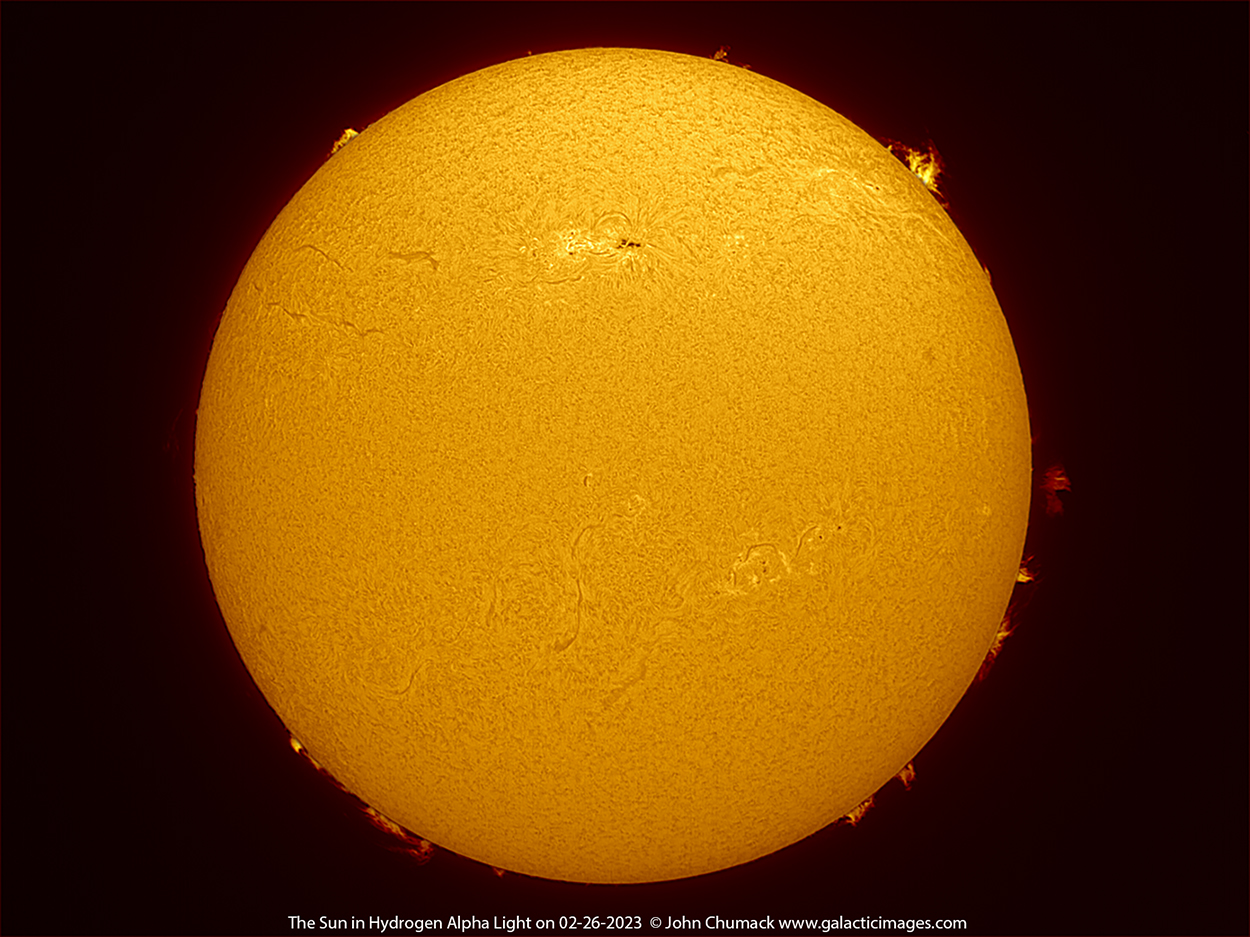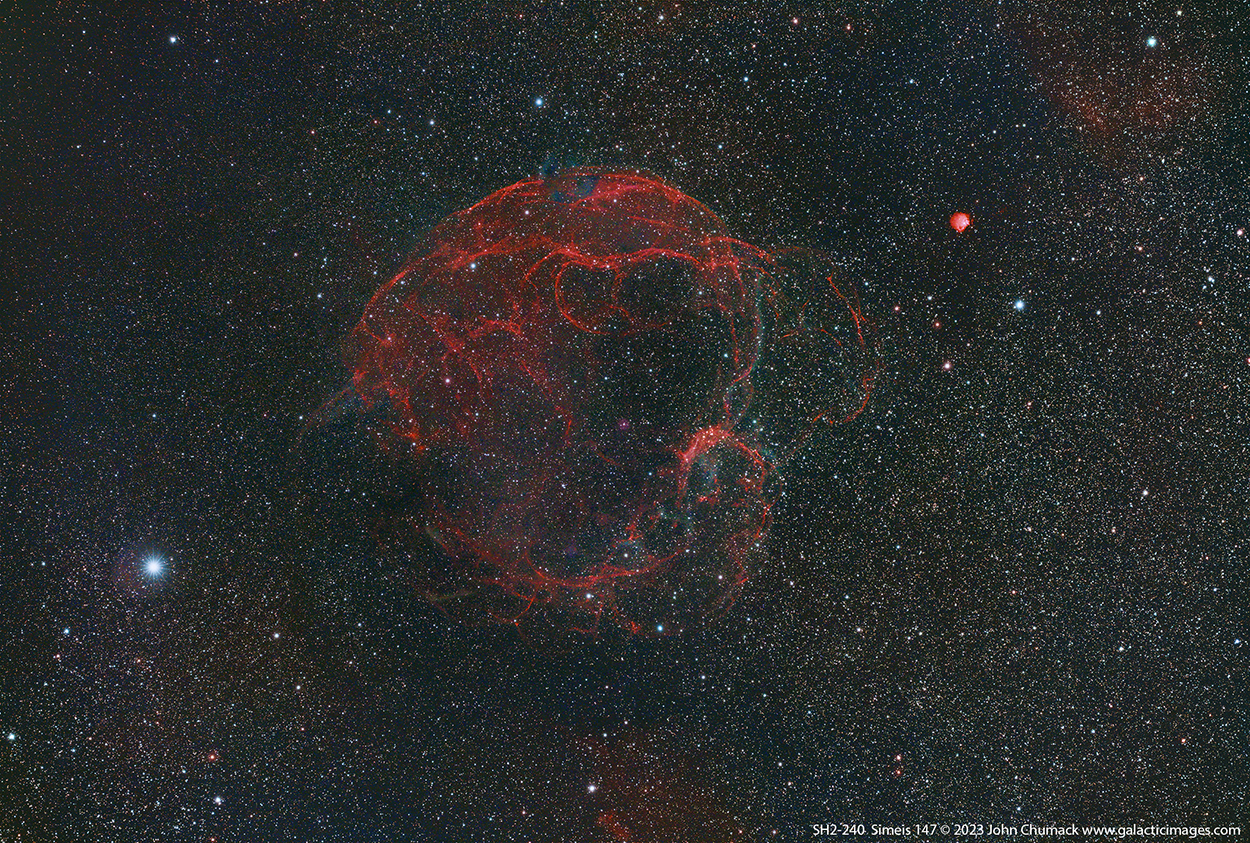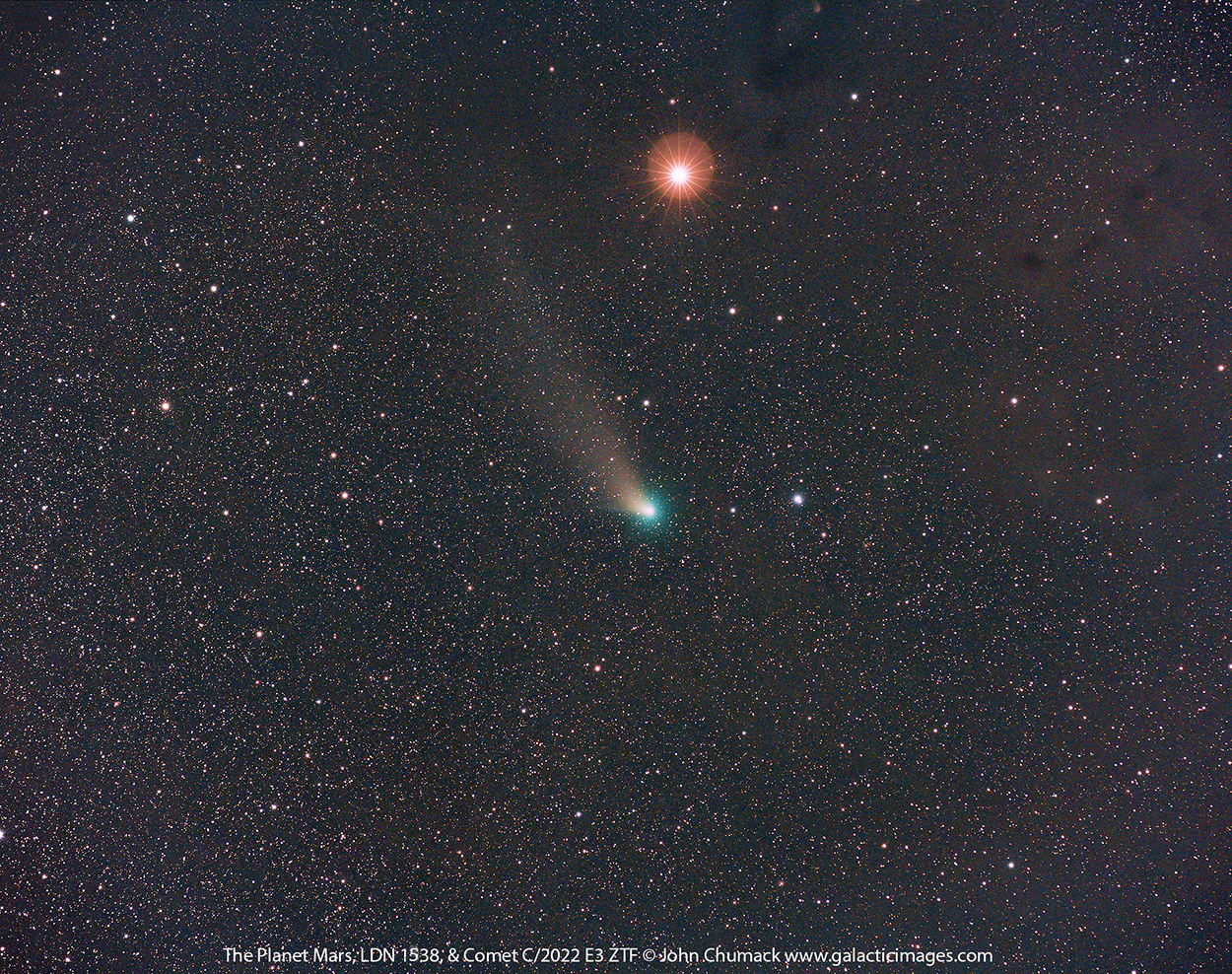Aurora Borealis “The Piano Keys” on 03-25-2023
The Aurora Borealis “The Piano Keys” often seen up here in Alaska, it reminds me of Piano Keys playing, as the magnetic field lines shift & pulse colors and shapes across the Aurora wall from one end of the sky to the other.
The constellation Leo is visible in the upper left, and Open Star Cluster M44 (Praesepe) The Beehive Cluster is at the top Center,
and between the two tall trees on the right is Orion’s Belt, above that is the Red Giant star Betelgeuse & the Red planet Mars is also above the trees. Finally in the lower center is city light pollution glow from Fairbanks, 60 miles away, and the lower far right is the orange glow from the waxing Crescent Moon setting behind clouds.(Sorry not a Sunset)
Canon 6D DSLR Camera, 16mm F2.8 lens, ISO 3200, 10 seconds exp. on 03-25-2023
Location : Chena River State Recreation Area/White Mountains of Alaska.
Best Regards,
John Chumack
www.galacticimages.com
Solar Activity on 04-09-2023
Here is the reason we have been getting great Aurora’s – I Shot these images Easter Sunday.
The Sun is getting much more active as we get closer to Solar Maximum(11 year cycle) in July 2025
Here is my shot of Active Sunspots /AR3272 in Hydrogen Alpha Light.
NASA’s Space-weather & NOAA stated that there is a 30% chance of M-class solar flares today, April 9th – 10th.
Almost certainly, the source would be sunspot group/ AR3272, which has an unstable ‘beta-gamma’ magnetic field. Any explosions will be Geo-effective as the sunspot is turning to face Earth.
Meaning any release of this energy is going to head toward Earth and could spark northern lights up north again.
Attached you can see my shot of the Sunspot group/AR3272 Region as it just came around the South Eastern Limb of the Sun. I capture these images yesterday from my backyard observatory in Dayton, Ohio with my Lunt 60mm/50F Hydrogen Alpha Solar telescope & QHY290 Cmos Camera, Software Bisque MyT Robotic Mount.
Close-up Shot:
QHY290 Cmos camera, Fire-Capture software, SER video File, 1200 frames stacked in Registax6. Adobe Raw 2023.
Capture Date & Time 04-09-2023 at 16:50 U.T.
Full Solar Disk Shot:
I used a QHY5IIL Cmos Camera , Fire-Capture software, SER video File, stacked 700 frames in Registax6, Adobe Raw 2023.
Capture Date and Time 04-09-2023 at 16:38 U.T.
best Regards,
John Chumack
www.galacticimages.com
Wonderful Green all sky Aurora on St. Patrick’s Day…03-17-2023
Nothing wrong with getting a little Green color in the Wee hours of the Morn on St. Patti’s Day!
We got up to the top of the Dome with the Snow Caterpillar, and our 2023 Aurora Crew enjoyed a nice Aurora display covering the entire sky that night,
although the slight breeze was making it much feel much colder, that we had to occasionally hit the heated Yurts for some hot beverages.
The constellations Perseus & Cassiopeia are both visible on the left side of the image.
I captured this image just outside the Chena River State Recreational Area, at 3,000 ft. Elevation in the White Mountains of Alaska on 03-17-2023
Canon 6D DSLR Camera, 16mm F2.8 Lens, ISO 5000, 5 second exposure.
Best Regards,
John Chumack
A Fish-eye view of the Aurora on 03-25-2023
Alaskan Aurora Frozen Beauty!
Pastel Aurora above John on 03-11-2023
Just waiting for our next 2023 Aurora Hunting Crew to Arrive on Tuesday.
and John S. and I set out to Checkout & prep our sites for their arrival.
temps were not bad, only hovering around -1F last night. Was a balmy 28F during the day.
The area received a lot of deep snow again this year…but at least its manageable…
and this means we should be able to see and photograph some Moose again this year as well as Aurora.
We saw a large moose on our way out to one of our sites last night.
The Aurora kicked up nicely around 10:00pm last night and we enjoyed a decent display(kp3)
Now that those high level cirrus clouds passed through it started to clear off enough to see the Aurora Borealis well.
In this self-portrait image I captured the Pastel Aurora covering the constellation of Auriga & Cassiopeia, Hyades, Pleiades, Mars, and even the faint glow of the great Andromeda galaxy.
Canon 6D DSLR, Tokina 16mm F2.8 Lens,
ISO 5000 for 8 second exposure.
Camera on a Tripod.
The Leo Galaxy Triplet on 02-14-2023
The Sun In Hydrogen Alpha Light on 02-26-2023
The Sun In Hydrogen Alpha Light on 02-26-2023 at 1859 UT
I waited two hour for the fast moving high cirrus clouds to leave a hole long enough for me to image the Sun, finally got a clearing hole that lasted about 15 minute.
My latest image shows the Sun’s full disk with 6 active Active Regions, AR3234, AR3235, AR3229, AR3237, AR3236, AR3230,
visible are Sunspots, Plagues, Filaments, and Prominences galore!
Captured from my backyard Observatory in Dayton, Ohio with my Lunt 60mm/50 HA filtered Scope, QHY5IIL Cmos Camera, 700 frames stacked in Registax 6,
Post processed in Adobe Raw CC 2023.
Best Regards,
John Chumack
www.galacticimages.com


